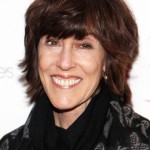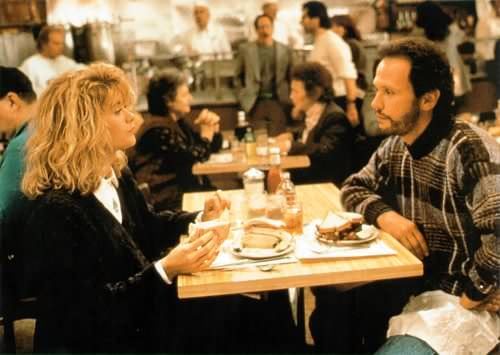Film Friday
 I’m a little late in writing about Nora Ephron, who died last week, but I take this occasion to honor her for how, with movies like When Harry Met Sally and Sleepless and Seattle, she saved romantic comedies.
I’m a little late in writing about Nora Ephron, who died last week, but I take this occasion to honor her for how, with movies like When Harry Met Sally and Sleepless and Seattle, she saved romantic comedies.
It seems strange to talk about saving perhaps the most resilient of American genres, one which has been flourishing since at least Clara Bowe’s It in the 1920’s. There were the Capra and Hawks screwball comedies of the 1930’s, the Preston Sturges comedies of the early 1940’s, Hepburn and Tracy in the 1940’s and 1950’s, and the Doris Day and Rock Hudson/Cary Grant movies in the 1960’s. But in the early 1970s there were some film theorists, most notably NYU’s Brian Henderson, who thought the genre had run his course.
Their reasoning was that sexual anxiety is at the core of the romantic comedy, and during the sexual revolution they believed that there would no longer be anxieties connected with sexuality. After all, if sex is no longer a social taboo, then one doesn’t giggle at sexual innuendo, a mainstay of many a romantic comedy.
In many of those earlier romantic comedies, there is a tension between the business of marriage (social control) and the anarchy of sexual desire. A central character—sometimes a man (Cary Grant in Bringing Up Baby), sometimes a woman (Rosalind Russell in His Girl Friday), sometimes both (Irene Dunne and Grant in The Awful Truth)—have a choice between dour respectability and irresponsible fun, and the movie is structured around a way to negotiate between the conflict. In other words, how can you be responsible and have fun both? But if marriage is passé and sex free and open to all—many thought this when I was in college—then negotiating is not necessary and there’s no romantic comedy plot. Add to this the feminist movement’s attack on patriarchal marriage and one can see why Henderson predicted the genre’s demise.
It now seems obvious to us that loosening up sexual taboos didn’t end anxieties over being in relationship. Anxiety, indeed, is at the heart of Woody Allen’s so-called “nervous comedies” of the 1970s, most notably Annie Hall. But Annie Hall, which ends with Allen and newly-liberated Diane Keaton going their separate ways, isn’t exactly a romantic comedy. That’s where Ephron comes in.
In When Harry Met Sally, Ephron draws on Annie Hall but concludes, in classical romantic comedy style, with a marriage. In Sleepless in Seattle, she has successfully “Ephronized” the formula, which involves a lot of anxiety, relatively little sex (sometimes none at all), and a coupled ending.
She paved the way for the so-called “Slacker-Striver” romantic comedies of the 21st century (he’s the slacker, she’s the striver), and the genre, although it became more physical, still carried her mark. In Knocked Up, for instance, a beautiful heroine may become pregnant after a wild night out with an irresponsible, overweight guy (no one she would ever turn to if she were sober), but in the end a happy marriage prevails. We’re back to negotiating between institutional responsibility and anarchic desire.
Nora Ephron took us into the post-1960s era by showing us that we weren’t ready—and probably will never be ready—to abandon that story.


